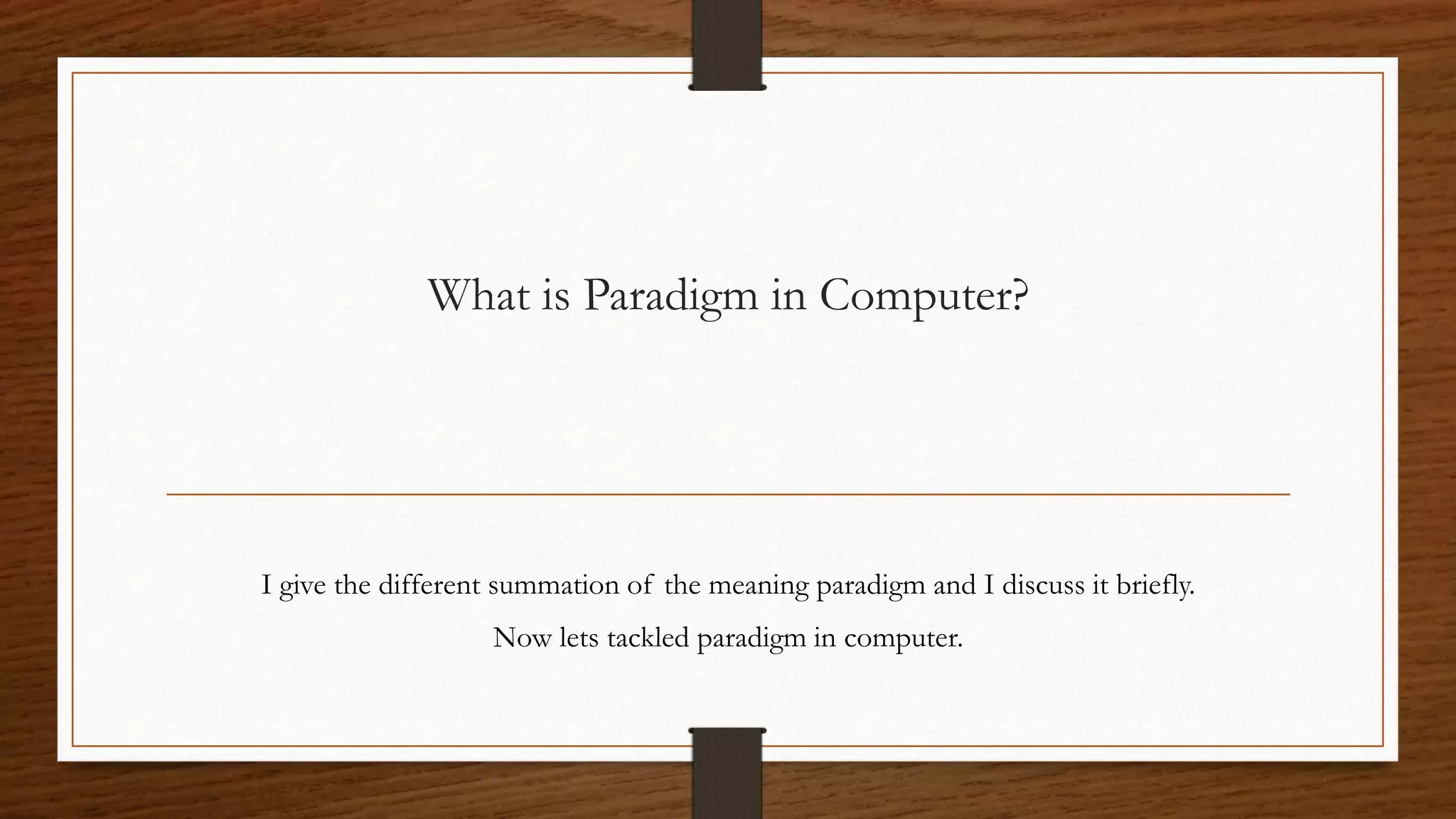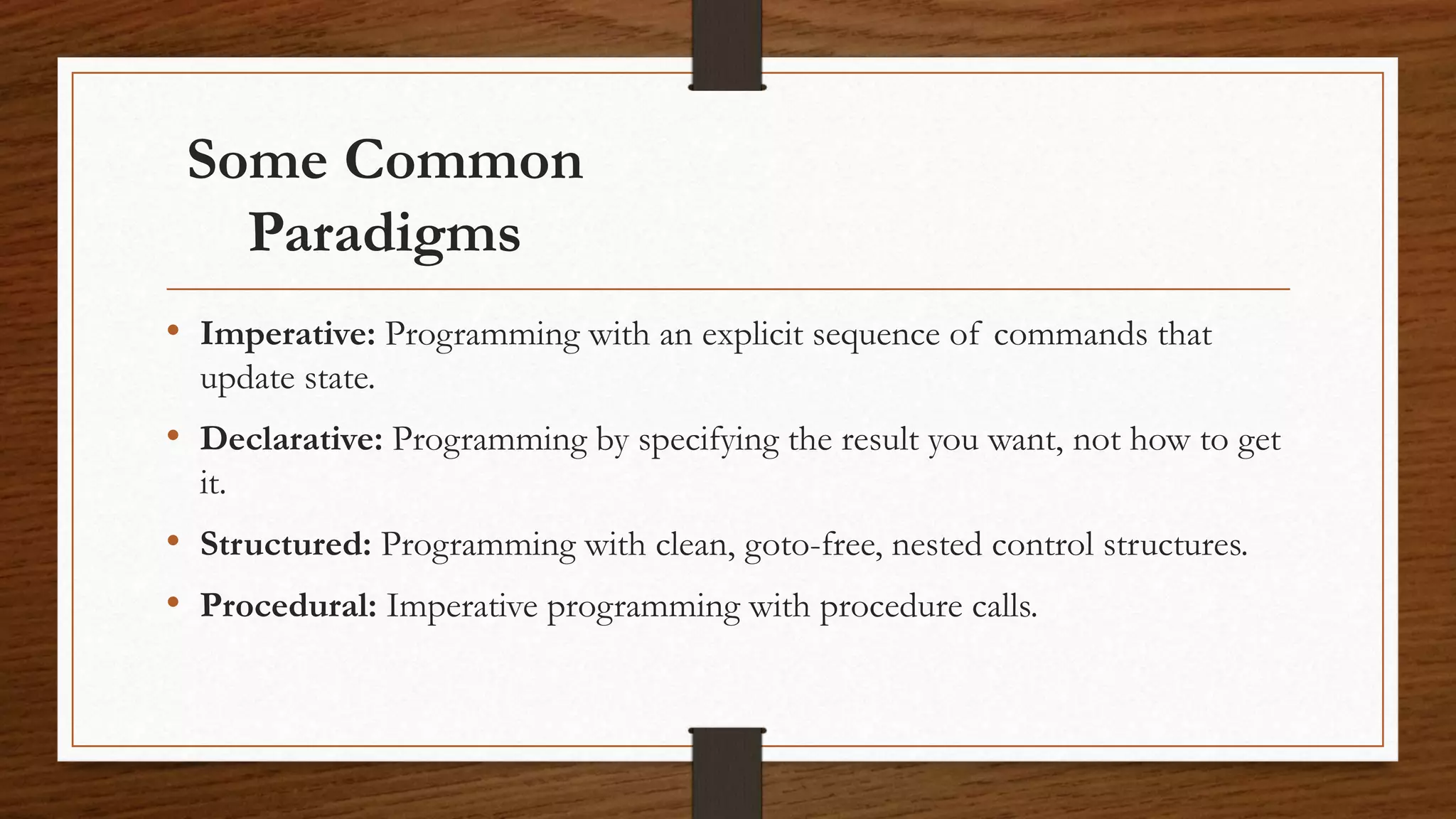A programming paradigm is a style or approach to programming. Some common paradigms include imperative, declarative, structured, procedural, functional, object-oriented, logic-based, and constraint-based programming. Paradigms define aspects like control flow, use of variables and data, and how programmers specify programs. Many popular languages support multiple paradigms to varying degrees. Pure languages focus on a single paradigm while multi-paradigm languages facilitate multiple approaches. Paradigms are not exclusive categories as programs may incorporate elements of different styles.








![result = [ ]
i = 0
start:
numPeople = length(people)
if i >= numPeople goto finished
p = people[i]
nameLength = length(p.name)
if nameLength <= 5 goto nextOne
upperName = toUpper(p.name)
addToList(result, upperName)
nextOne:
i = i + 1
goto start
finished:
return sort(result)](https://image.slidesharecdn.com/paradigmit-220915000947-e6da9a12/75/PARADIGM-IT-pptx-9-2048.jpg)

![result = [ ];
for i = 0; i < length(people); i++ {
p = people[i];
if length(p.name)) > 5 {
addToList(result, toUpper(p.name));
}
}
return sort(result);](https://image.slidesharecdn.com/paradigmit-220915000947-e6da9a12/75/PARADIGM-IT-pptx-11-2048.jpg)

![result := List new.
people each: [:p |
p name length greaterThan: 5 ifTrue: [result add (p name upper)]
]
result sort.
^result
This can be shortened to:
^people filter: [:p | p name length greaterThan: 5] map: [:p | p name upper] sort](https://image.slidesharecdn.com/paradigmit-220915000947-e6da9a12/75/PARADIGM-IT-pptx-13-2048.jpg)
![Many popular languages that call themselves OO languages (e.g., Java, C++), really just take
some elements of OOP and mix them in to imperative-looking code. In the following, we can
see that length and toUpper are methods rather than top-level functions, but the for and if are back
to being control structures:
result = [ ]
for p in people {
if p.name.length > 5 {
result.add(p.name.toUpper);
}
}
return result.sort;](https://image.slidesharecdn.com/paradigmit-220915000947-e6da9a12/75/PARADIGM-IT-pptx-14-2048.jpg)


![Yikes! We’ll describe that later. For now, be
thankful there’s usually syntactic sugar:
let
fun uppercasedLongNames [] = []
| uppercasedLongNames (p :: ps) =
if length(name p) > 5 then (to_upper(name p))::(uppercasedLongNames ps)
else (uppercasedLongNames ps)
in
sort(uppercasedLongNames(people))](https://image.slidesharecdn.com/paradigmit-220915000947-e6da9a12/75/PARADIGM-IT-pptx-17-2048.jpg)






